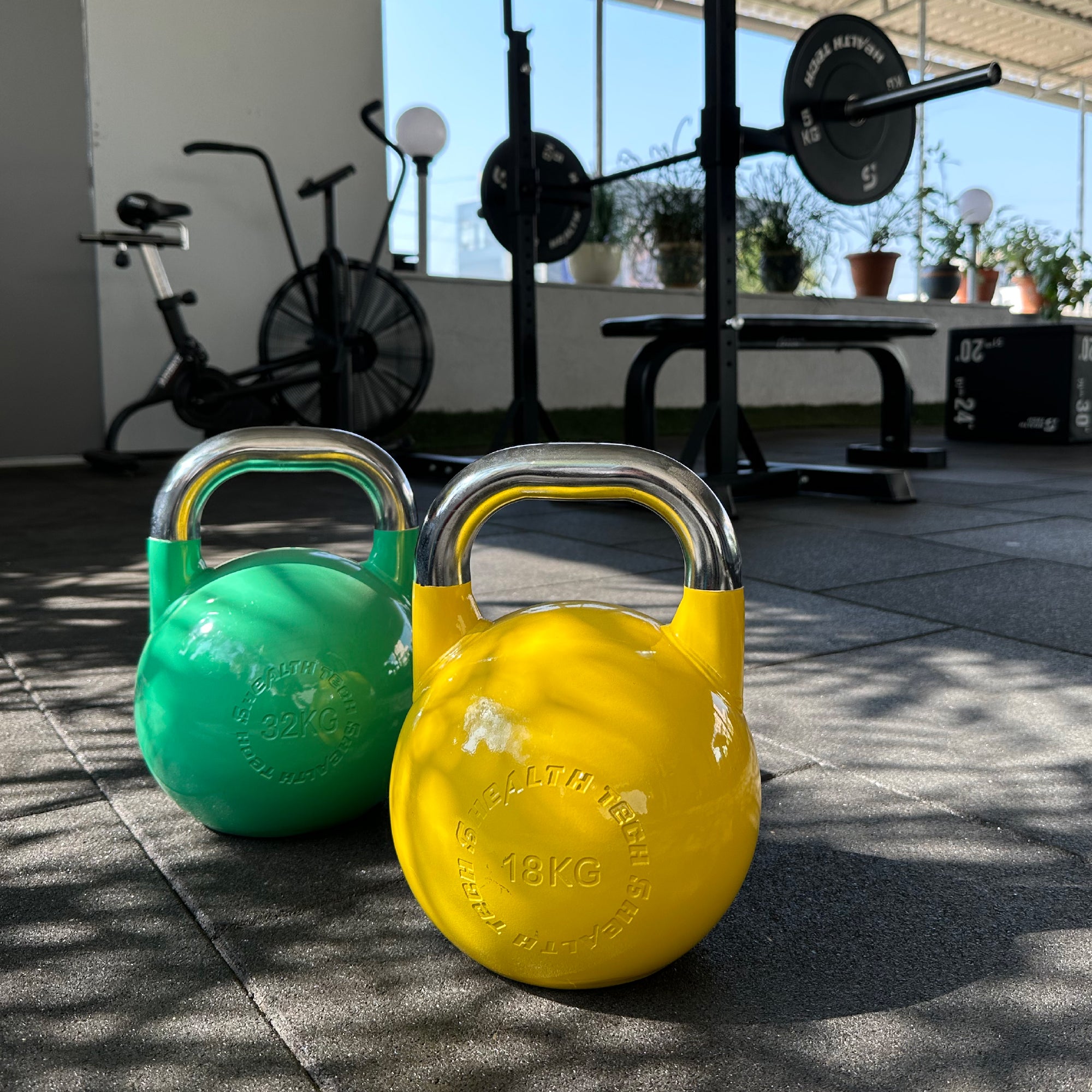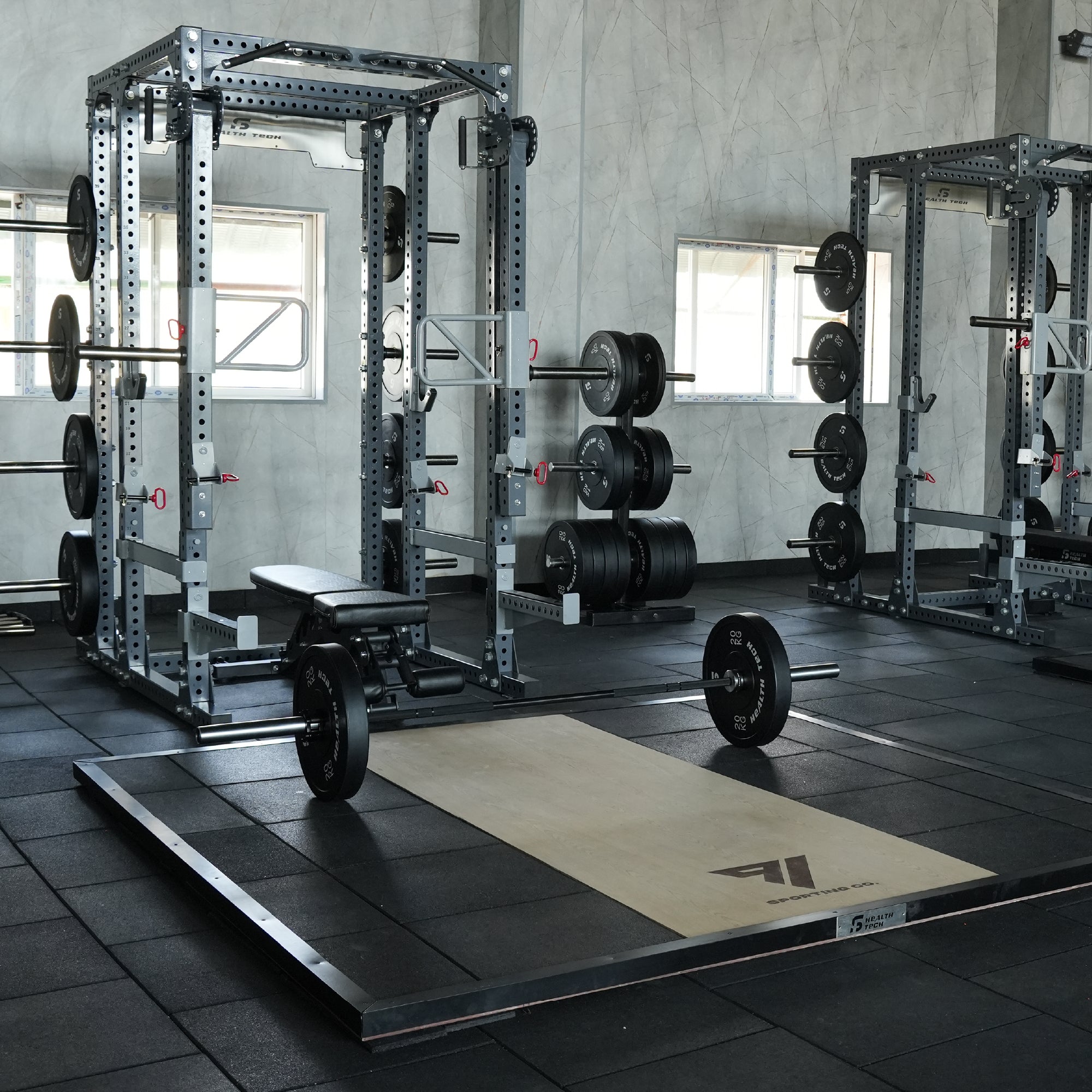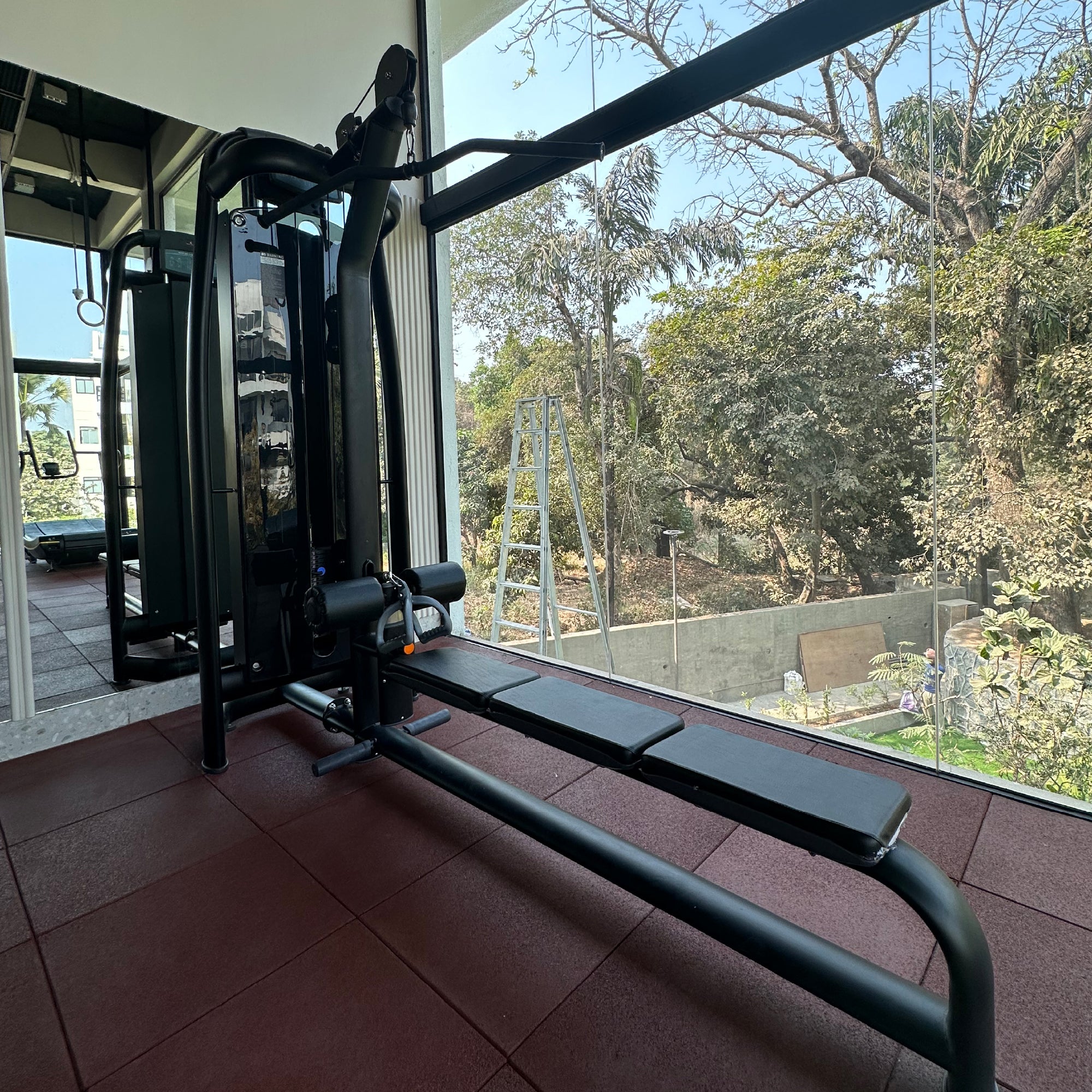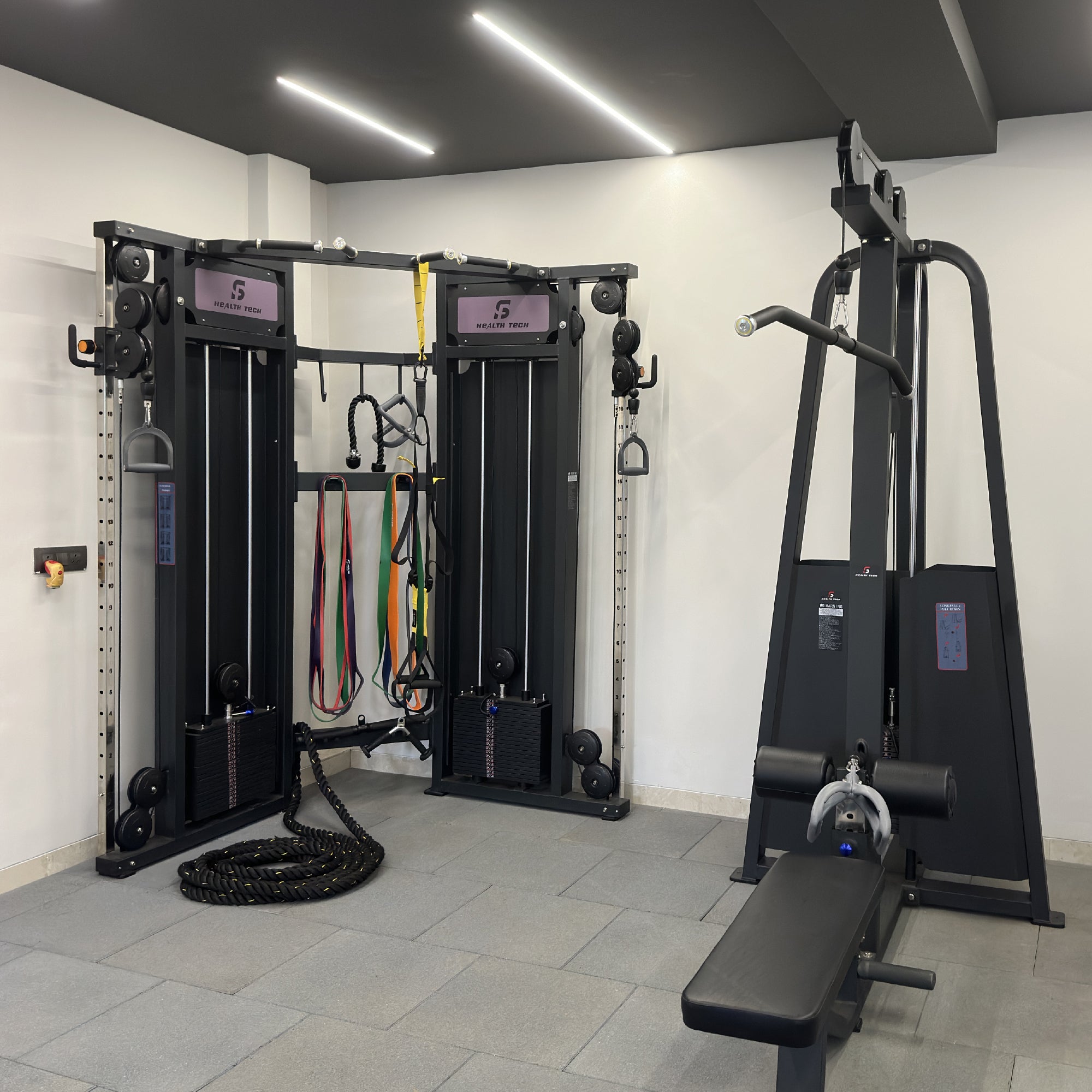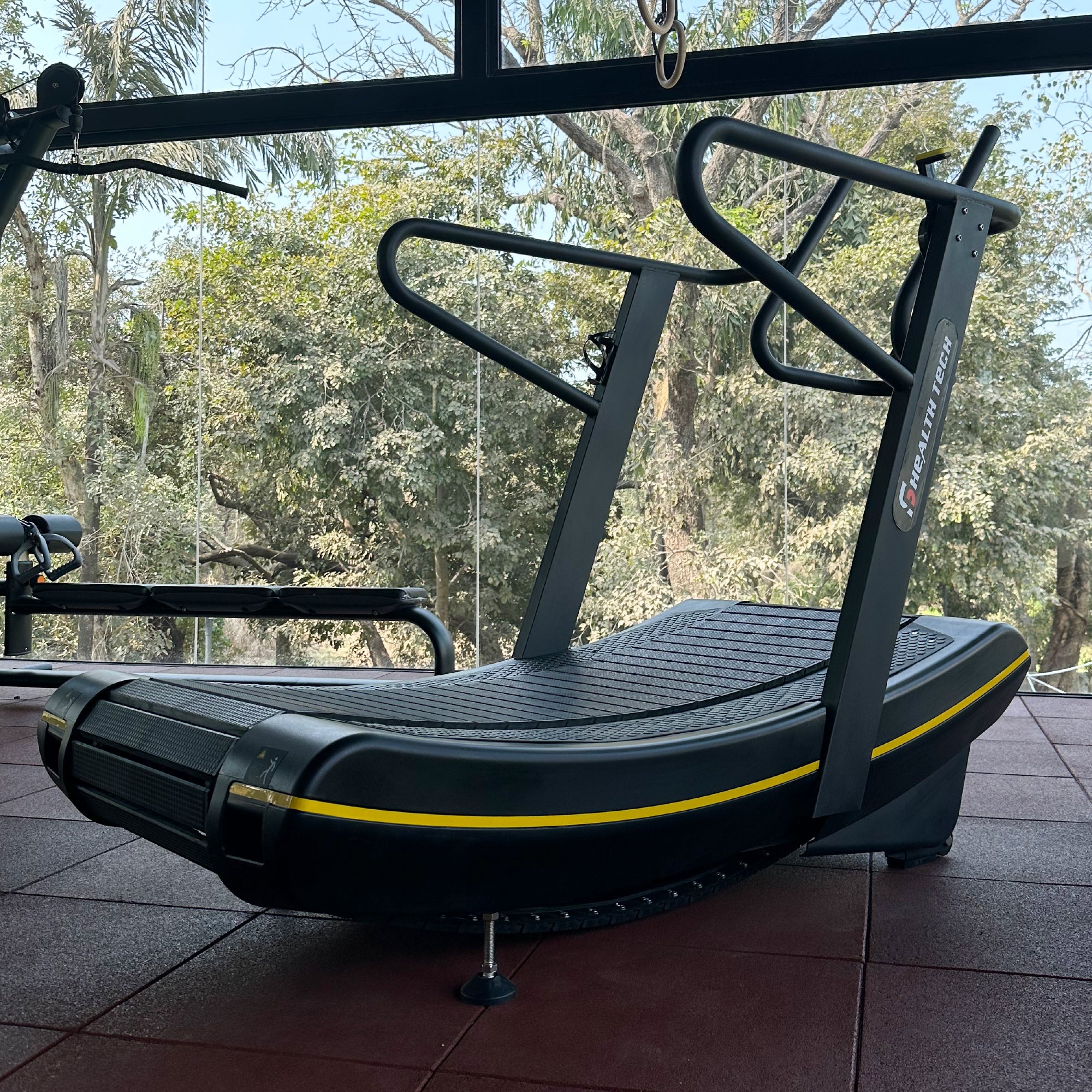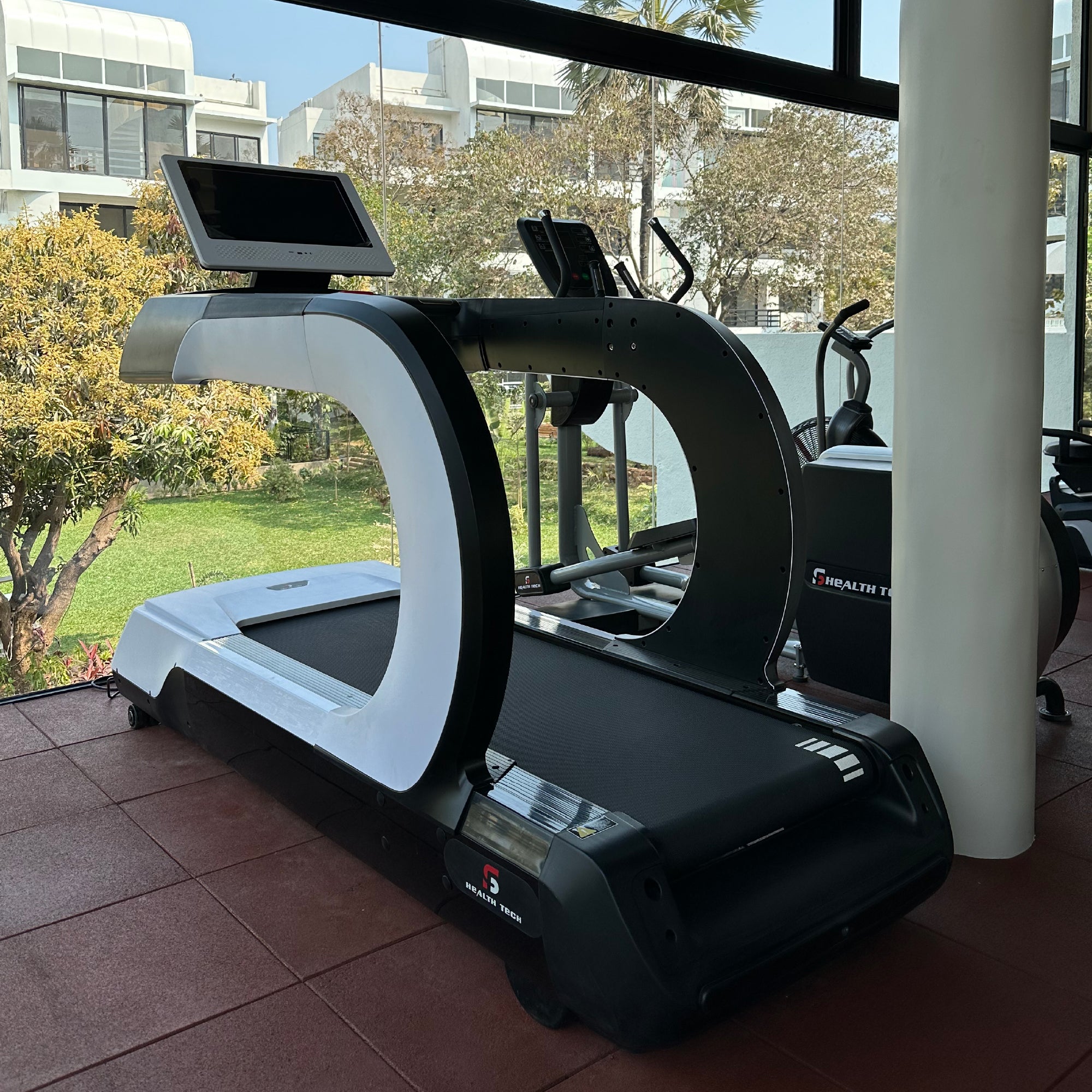5 Main Types of Exercises for Different Types of Fitness Goals

Fitness is not just about huge biceps or a thin waist. A well-rounded fitness program is designed with five specific goals – cardiovascular fitness, strength, agility, balance, and flexibility. And to achieve these goals, you must incorporate a variety of exercises in your workout sessions, each belonging to a specific category.
In this article, you will read about the 5 main types of exercises and their benefits, which will help you understand and achieve your fitness goals.
-
Aerobic Training/Endurance Training
Endurance is the ability to do strenuous physical work without tiring out quickly. Great endurance helps you exercise better for longer periods. And to increase endurance, aerobic training is extremely necessary.
The types of exercises that target the cardiovascular system, primarily the lungs and the heart, come under the aerobic training category. Instead of working out with maximum effort, cardio exercises are performed for a longer time period at a steady energy level.
Purpose: Aerobic training or cardio exercises are great for:
- People looking to lose weight.
- Athletes looking to improve their overall performance and increase endurance for specific training programs, such as marathons.
- Athletes looking to speed up muscle recovery.
- People trying to reduce the risk of critical diseases such as heart disease, obesity, and diabetes.
Benefits: The benefits of aerobic or endurance training go beyond being able to exercise for longer time periods. Here are the other great benefits:
- Endurance training improves metabolism by boosting the production of the hormone FGF21.
- It improves the ability of our heart to pump oxygenated blood, which eventually reduces the risk of cardiovascular disease.
- Improved endurance and stamina boost self-confidence, which eventually improves mood and mental health.
- Endurance training can increase lifespan.
Examples – Some examples of endurance exercises include:
- Running
- Walking
- Cycling
- Dancing
- Swimming
- Skipping/Jump Rope
- Lunges
- Squats
- Push-ups
- Sit-ups
- Hiking, etc.
-
Strength Training
Strength training or resistance training includes the kinds of exercises that increase muscle strength and make you stronger. In strength training, you move your body against weight/resistance, such as dumbbells, free weights, bodyweight, etc. This type of workout targets specific muscle groups through incremental weight and repetition increases.
Equipments for your strength training exercise
Purpose: Strength training is great for:
- People who are looking to increase muscle mass.
- Sportsmen training for bodybuilding, powerlifting, weightlifting, strongman, shot put, javelin throw, etc.
- People looking to increase physical attractiveness by getting a toned and chiselled body.
- Anyone looking to increase bone density and overall strength.
Benefits:Strength training has several benefits.
- Muscle mass tends to decrease with age, but strength reverses that side effect of ageing and increases muscle mass.
- Strength training reduces the risk of fractures because of improved bone density.
- It allows joints to stay flexible and reduces the risk of arthritis.
- It helps in burning calories easily and thus controlling weight.
- Strengthening exercises improve balance.
Examples: These strength training exercises can be done with free weights or machines in the gym:
- Two-arm bent-over rows/pull-downs
- Free-weight upright rows
- Dumbbell or bar press
- Cable crossovers
- Leg press
- Squats with dumbbells
- Triceps press-downs, etc.
Note: Pull-ups and push-ups are very effective if you’re doing strength training exercises against body weight.
-
HIIT/Circuit Training
High-intensity interval training (HIIT) or circuit training is a type of workout that includes a series of high-intensity exercises alternated with low-intensity recovery periods. For example, 30-second fast-cycling against high resistance followed by slow and easy cycling against low resistance is a very effective circuit training exercise. Each session consists of several repetitions and has short periods of high-intensity exercises that make the heart rate speed up. The duration of a circuit training session can be anywhere between 10 minutes and 30 minutes.
Purpose: Circuit training is ideal for:
- People looking to improve muscle tone and cardiovascular fitness.
- People who are looking to lose weight but have less time to spare.
- People looking to improve overall fitness.
- People with high cholesterol levels, diabetes, or high blood pressure.
Benefits: There are many benefits of circuit training.
- It renders health benefits similar to twice as that of moderate-intensity workouts.
- It burns 25-30% more calories than other types of exercises.
- It improves the body’s metabolism in a way that fat is used instead of carbs for energy production, because of which it helps in quick weight loss.
- It helps in increasing muscle mass in certain individuals.
- It improves muscles’ ability to use oxygen.
- It can reduce blood pressure and heart rate in people suffering from obesity.
- It reduces blood sugar and also improves insulin resistance, i.e., making it very beneficial for people at risk for type-2 diabetes.
Examples: Here are a few examples of circuit training workout:
- Fast pedalling on a stationary bike for 30 seconds followed by slow cycling for 2-4 minutes.
- Beginning with warming up and then sprinting as fast as possible for 15 seconds, followed by a slow-pace walk or a jog for 2 minutes.
- Quick squat jumps for 30 to 90 seconds followed by standing or walking for 30 to 90 seconds.
Note: These exercises should be done in repetitions for 10 to 30 minutes.
-
Flexibility Training
As the name suggests, flexibility training includes various stretching exercises to lengthen muscles, which helps you move comfortably throughout the day. However, flexibility is not just being able to touch your toes without pulling a muscle. It goes beyond doing a few body stretches. It relates to motion ranges available at joints. While some muscles may be very flexible, a few may become inflexible over time because of a sedentary lifestyle. This is where flexibility training comes in; it helps in improving the overall flexibility of all the muscles.
Purpose: Flexibility training is very helpful for:
- People who move inefficiently due to muscle stiffness.
- People looking to get into better shape.
- People with larger bone size or bulky body
Benefits: The benefits of flexibility include:
- Reduction in chances of getting injured during physical activities.
- Improved muscle strength.
- Improved balance and posture.
- Increased range of mobility, which makes everything – from picking something off the top shelf to hiking – easier.
- Reduced muscle pain and soreness, such as chronic back or lower back pain.
- Improved blood circulation in the body.
- Improved mood.
- Improved athletic performance.
Examples: Some examples of flexibility training include:
- Butterfly stretch
- Knee to chest stretch
- Twisting lunge
- Side bend stretch
- Yoga
- Tai chi
- Pilates
-
Balance Training
Balance training includes the kinds of exercises that help in controlling and stabilising the body’s position. As we age, the ability to know where we are in space worsens, which is the reason for a decline in balance. This problem is also common after injuries. Therefore, balance training is done to restore the balance.
Purpose: Balance training is helpful for:
- People in old age with a thrown-off centre of gravity.
- People who have suffered an injury that led to an imbalance in the body.
- Pregnant women.
- People who have gained or lost weight.
Benefits: There are several benefits of balance training, such as:
- It prevents falls.
- It reduces the risk of injuries, especially knee and ankle injuries.
- It improves the ability to know where you are in space, also known as proprioception.
Examples: Some examples of balance training include:
- Standing on one foot
- Shifting weight from side to side
- Walking heel to toe
- Standing on a stability ball or a balance board
- A few yoga, Pilates or tai chi exercises
- Doing exercises without any purpose can sometimes not render any great benefits. So, evaluate your requirements and find out what kind of exercises can work best for you.


